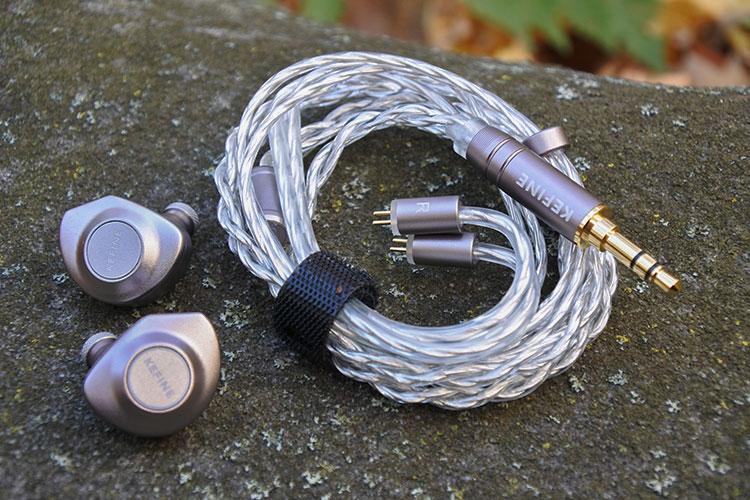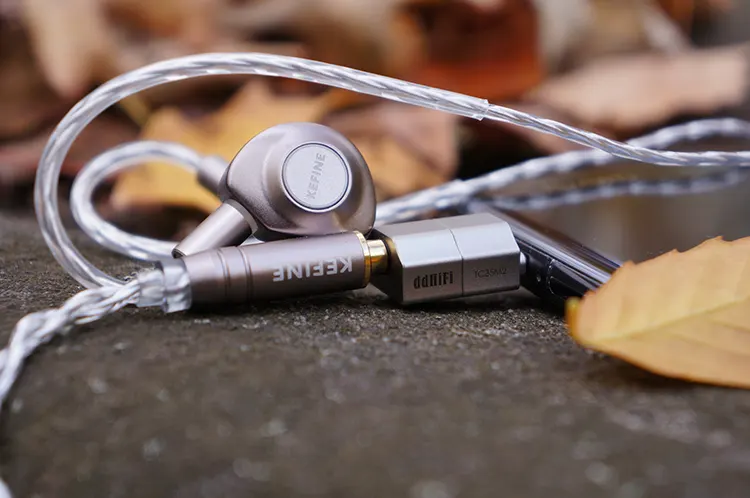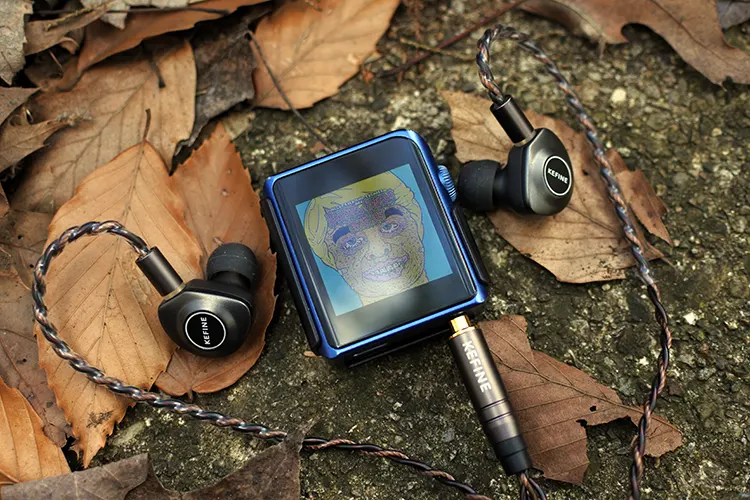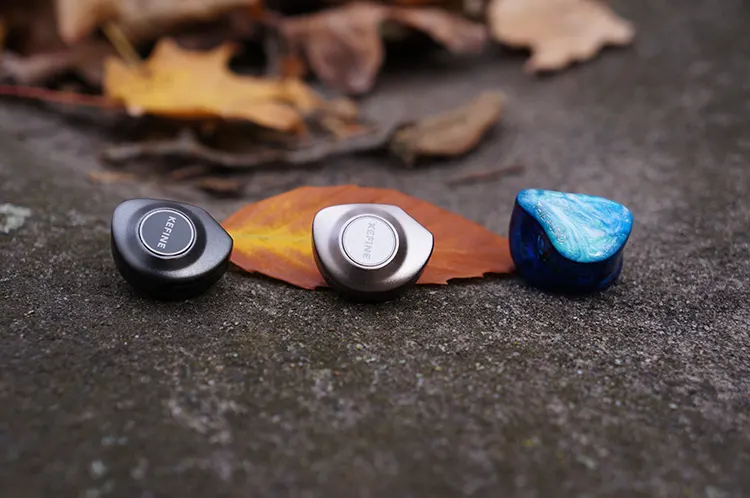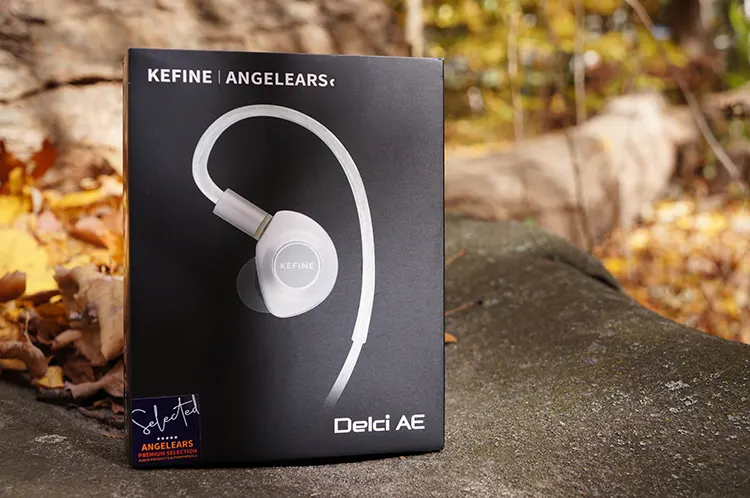Synergy
Efficiency
The Delci AE has a sensitivity of 108 dB/mW ± 3 dB and an impedance of 28Ω, making it compatible with a wide range of devices. It’s balanced enough to avoid being too loud at low volumes, while also not being difficult to drive to full volume on most sources.
Across various setups, from basic dongles to high-end DAPs, the Delci AE produces clean output with little to no background hiss.
ddHiFi TC35 Mountain 2 Pairing
The TC35 Mountain 2’s warm-leaning signature complements the Delci AE with the gold filters, emphasizing the powerful low end.
The Delci AE’s clarity in the mid-range and energetic upper end are retained, though some of the control present on more powerful sources is absent, resulting in a slightly looser treble.
Volume control is generally effective, with the TC35M2 providing ample power at higher volumes, though the minimum volume might be too loud in very quiet environments.
Earstudio HUD100 Pairing
The analog signature of the HUD100 is a natural fit for the Delci AE. The bass remains strong, and the improved midrange and treble clarity contribute to a more open soundstage.
There’s a reduction in midrange warmth, which lends a cooler tone to the Delci AE, shifting the vocal preference toward more neutral or deeper voices. Although the HUD100’s Dynamic filter can add some warmth, the change is subtle.
FiiO KA15 Pairing
FiiO’s KA15 is nearly ideal for the Delci AE, with a neutral signature and a warm tilt that enhance the Delci AE’s robust bass and gold filter’s added brightness.
While the response from the deepest bass notes is slightly reduced, the overall extension remains excellent, the midrange gains detail and the treble grain is smoothed (though not as much as with the silver filters).
Staging feels more rounded, and the KA15’s onboard controls provide precise volume adjustments, from very low to extremely high levels.
Select Comparisons
Kefine Delci
Technical
Both the Delci and Delci AE use a 10mm dynamic driver with a DLC-coated diaphragm, 2-pin removable cables, and machined aluminum housings.
The Delci AE, however, features a silver color and a replaceable nozzle design. With matching sensitivity (108 dB/mW) and impedance (28Ω), both are easy to drive.
Design
Aside from the Delci AE’s new colorway and replaceable nozzle design, both models share the same ergonomic, low-profile shell.
The fit of the Delci AE is slightly better, particularly in the left ear, likely due to the wider tuning filter system. Isolation remains average across both models, and users may need third-party foam or multi-flange tips for better passive noise isolation.
The Delci AE’s cable is also thinner and lighter, improving on the original Delci’s cable handling.
Preference for visual appeal may vary, but the Delci AE’s silver finish and cable design stand out slightly more.
Performance
Given the Delci AE with the silver filter installed sounds virtually identical to the Delci, the following impressions will be taken using the Delci AE with the gold filter.
The Delci AE’s gold filter provides a subtle increase in presence and brilliance regions giving it a lighter, brighter, and more airy presentation than the standard Delci. Cymbals, chimes, and other instruments and effects have more presence in the mix, along with a small increase in detail and clarity.
This bump in emphasis brings forth additional grain leaving the Delci AE sounding less refined in the upper ranges. The difference is minimal but noticeable, though it certainly did not ruin the listening experience for me.
The upper midrange sees a more significant bump from the Delci AE’s gold filter. This gives the upgraded model more vocal presence over what we hear from the Delci, along with a more notable bump in clarity and detail.
This results in sibilant tracks sounding even more so through the Delci AE. Still, like the original Delci, the Delci AE doesn’t add sibilance where there wasn’t any.
Bass performance on the two is nearly identical with outstanding depth with plenty of visceral feedback on deep sub-bass notes. While the Delci AE could benefit from more texture it offers a mild improvement over the original Delci’s presentation.
Staging on the original Delci was wide but lacked depth, hindering its ability to properly layer complicated tracks. The Delci AE provides a similar staging size, but improves upon the original’s depth, giving listeners a more open and dynamic sound stage.
The rest of the Delci AE’s technical qualities are on par with the original Delci, offering accurate channel-to-channel transitions and good instrument separation.
Thieaudio Legacy 2
Technical
The Legacy 2 differs by using a hybrid setup with a Knowles balanced armature and a 10mm beryllium-coated dynamic driver, while the Delci AE uses a single DLC-coated 10mm dynamic driver.
With similar sensitivity, the Delci AE is slightly louder at the same volume settings due to its 28Ω impedance versus the Legacy 2’s 32Ω.
Design
The Legacy 2 uses acrylic housings, making it lighter (3.4g vs. 5.3g for the Delci AE). Its custom-inspired shell allows for a deeper and more secure fit, resulting in improved comfort and passive isolation.
Both earphones have silver-plated cables, though the Delci AE’s cable has more metal detailing, lending it a premium feel. The Legacy 2’s light blue color and metallic swirls offer a unique look compared to the Delci AE’s simpler, silver finish.
Performance
These two offer similar signatures, though with strengths in different areas. The Delci AE provides a more robust low-end and thicker mid-range, while the Legacy 2 is more detailed and technically adept.
In the treble, the two models have a similar brilliance region bump with the Delci AE holding more emphasis in the presence region. The Legacy 2 places bias in the brilliance region.
I found the Legacy 2’s armature to bring more sparkle and a tighter presentation without the grain heard in the Delci AE. Overall clarity was slightly better out of Legacy 2, in part due to a leaner presentation.
This carries down into the mids where the Legacy 2 is leaner and crispier with greater vocal clarity. The Delci AE’s additional warmth and thickness make it more appealing for vocal-centric music, particularly female vocals where the Legacy 2 could benefit from additional warmth.
Dipping into the low end, the Delci AE shines. Not only does it extend further, but sub-bass notes also provide a more visceral punch that rumbles in the way the Legacy 2 can’t match.
The additional mid-bass weight of the Delci AE adds warmth and thickness to the mids, something the Legacy 2 would benefit from. The Legacy 2 offers improvements over the Delci AE though, mostly in terms of technical qualities like texturing, detail, speed, and control on congested tracks.
Sound staging on the Legacy 2 is larger overall. While both offer impressive width, the Legacy 2 has the depth that the Delci AE lacks, even if that isn’t a strength of the Legacy 2.
This results in the Legacy 2 sounding more immersive with improved layering qualities. Instrument separation and imaging accuracy are on par, with the Delci AE being a bit more accurate off-center.
My Verdict
Kefine’s collaboration with Angelears has taken an already solid budget model and elevated it even more. Although the upgrades aren’t drastic, they make the Delci AE my preferred choice between the two models.
The new tuning filter system gives users the flexibility to switch from a well-rounded, bass-heavy signature to a profile with equally powerful bass, enhanced midrange presence, more treble sparkle, and stronger technical performance.
While the gold filter adds a slight grain to the treble, the improvements in staging and overall technicalities make it worth the trade-off.
The enhanced aesthetic and handling of the new stock cable over the original further add to the appeal of the Delci AE.
Pricing is the only aspect that prevents a full recommendation over the original Delci. At the original Delci’s launch price of $59, the $30 price increase for the Delci AE may not be worth it unless you’re confident the filter system will be beneficial.
However, with most retailers selling the original Delci for around $75, the $15 difference for the Delci AE makes it a worthwhile investment.
Like its predecessor, the Kefine Delci AE is a well-rounded, budget-friendly earphone that’s likely to satisfy a wide range of listeners.
KEFINE Delci AE Technical Specifications
- Frequency Response: 20Hz–20 kHz
- Sensitivity: 108 dB +/- 3dB
- Impedance: 28Ω

